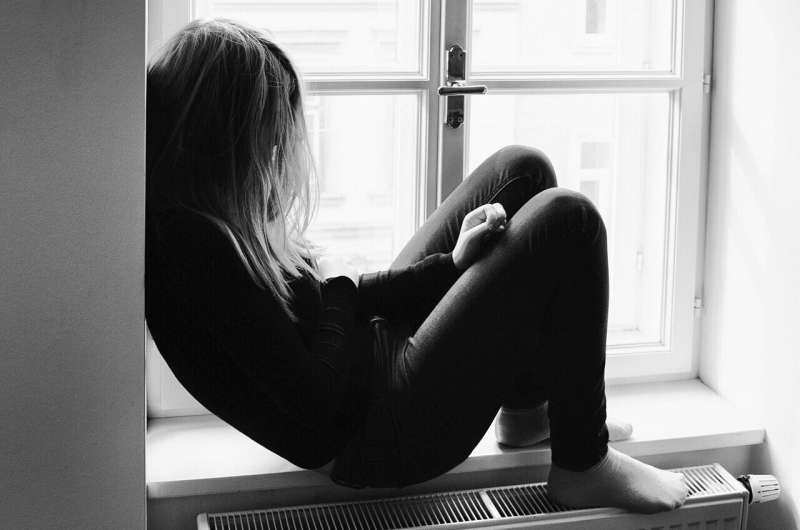Teenage girls are more sensitive to the anxiety of other girls, finds study

It is well known that adolescents tend to adopt the same behaviors as their peers. As Canadian students spend an average of 923 hours per school year in the company of their classmates, Sandrine Charbonneau wanted to see if there was any association between a student’s “state” (momentary) anxiety and the “trait” (longer-term) anxiety of his or her classmates.
In her master’s research at the Montreal Mental Health University Institute research center, under the supervision of Professor Sonia Lupien, she found an association of this type in girls but not in boys.
Her findings, published in the International Journal of Environmental Research and Public Health, were based on data collected by Audrey-Ann Journault for her doctoral research on the nature of the anxiety experienced by young people at school and possible contributors, such as parental, academic and individual factors.
Charbonneau compiled data from questionnaires completed in class by more than 1,400 girls and boys at six elementary schools and seven high schools on Montreal’s North Shore. The respondents were in grades 5, 6, 10 and 11.
The state-trait anxiety model
Charbonneau applied the state-trait anxiety model developed by American psychologist Charles Spielberger in 1988 to analyze her data.
The model distinguishes between two types of anxiety:
- State anxiety is a transient emotion that fluctuates according to environmental stimuli perceived as threatening. A student experiencing state anxiety has physical manifestations such as sweating, rapid breathing, stomach aches, etc. for a short period of time;
- Trait anxiety is a personality trait, an intrinsic characteristic of the individual that can lead them to perceive various situations as threatening. A student with trait anxiety will tend to experience more state anxiety at school.
Charbonneau analyzed the effect of being around classmates with trait anxiety on a student’s state anxiety. She also looked at whether the effect of peer anxiety differed for girls and boys in elementary and secondary school.
The effect of trait anxiety
The results indicate an association between a student’s state anxiety and other students’ trait anxiety, but only for girls. Being surrounded by girls with trait anxiety in the classroom has an effect on the state anxiety of girls; boys do not respond similarly to the anxiety of their peers.
“Specifically, if the average trait anxiety of the girls in the class increases by 5 points on a scale of 1 to 10 from one year to the next, a girl’s individual state anxiety will increase by two points whereas a boy’s will increase by only 0.3 points,” said Charbonneau.
The effect does not appear to vary by age; the association between a student’s state anxiety and classmates’ trait anxiety is similar for elementary and secondary students.
Is there a difference between private and public school students? This question wasn’t part of Charbonneau’s analysis but Journault did examine it.
“My doctoral research indicates that students in the public system are more likely to experience anxiety than students in private school,” Journault said. “This flies in the face of conventional wisdom but it is consistent with the findings of other studies. One hypothesis that could account for it is that young people who have more difficulty getting passing grades are at greater risk of anxiety.”
Why girls and not boys? The role of co-rumination
Charbonneau’s study is among the first to show that classmates can have an effect on a student’s state anxiety and that girls and boys respond differently.
Since this is new ground, it is difficult to explain why only girls are sensitive to the anxiety of other girls in their class, but Charbonneau does have a few hypotheses.
“It is well accepted in the scientific literature that girls express more anxiety than boys, and it may be because girls are socialized to express emotions, unlike boys,” she suggested.
She also noted that “girls are generally better than boys at detecting the emotions of others” and since the most frequent interactions in adolescence are with same-sex peers, “affiliation when faced with a stressor is one of the processes that may be directly related to the findings.”
Studies have shown that girls tend to affiliate when faced with stressful situations, unlike boys. “And, once they have affiliated, they tend to talk more intensely about their problems and negative emotions, a phenomenon called co-rumination,” Charbonneau explained. “Young people who co-ruminate tend to constantly share their concerns without finding concrete solutions.”
More information:
Sandrine Charbonneau et al, Anxiety in the Classroom: Only Girls’ Anxiety Is Related to Same-Sex Peers’ Anxiety, International Journal of Environmental Research and Public Health (2022). DOI: 10.3390/ijerph20010084
Journal information:
International Journal of Environmental Research and Public Health
Source: Read Full Article



